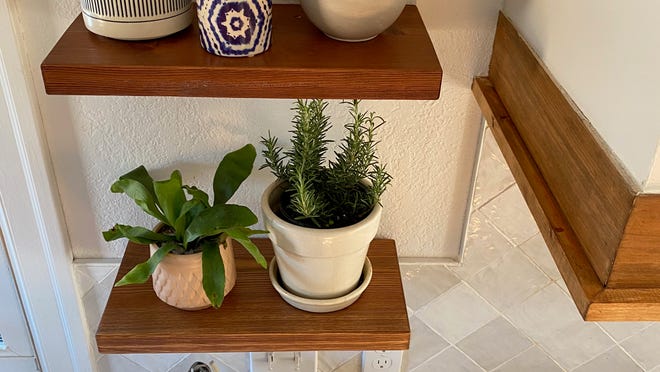
As a lot as I hate to see summer season go, I am hunting ahead to cooler times forward. So much so that I’ve been influenced to rethink my indoor plant game. Due to the fact we moved into our property very last Oct, I have been plotting where I may well put new houseplants.
Our cat Teddy chews on everything inexperienced, so if he can reach it, it’s as excellent as dead. Plants on the flooring or on tabletops are not an alternative. Right after residing here and observing the gentle in our house and watching my cat’s behavior, I have uncovered the very best place for my small indoor garden — the kitchen. Teddy rarely jumps on the kitchen counter, and the floating shelves that flank the hood aren’t quite hefty ample to keep my cookbook assortment. They’ve been begging for a goal.
The mild in the kitchen area is tricky — although it basically faces due east, it sits in the shadow of my neighbor’s house. With that in intellect, I consulted the industry experts at downtown Bremerton’s City Plant Shop to aid me pick primarily crops that would prosper in lower light-weight. They also drilled drainage holes in the pots I bought, repotted the vegetation for me and additional a rose quartz top rated dressing. This services only prices $3 for every pot if all products are acquired in retail store, or $5 for these acquired outside the house their shop. Drilling the drainage hole, which is vital for your plant’s survival, is absolutely free for pots bought at City Plant Shop.
If you are imagining about adding a couple houseplants to your dwelling, listed here are some design recommendations for curating a energetic assortment of crops and pots that visually work well alongside one another.
1. Look at scale
Small crops, major plants. Big leaves, small leaves. Choose a combine of not only the plant dimensions but the dimension of the plants’ leaves. Area a experienced plant following to a 4-inch or 2.5-inch plant, or a plant with massive foliage in close proximity to just one with modest, sensitive leaves.
2. Pick varying textures and habits
There are just so quite a few selections. Trailing vegetation work well on a high shelf or in a hanging basket. Cacti and succulents have heaps of texture and both upright or compact designs. Bushier vegetation like herbs and ferns have soft texture and volume.
3. Differ coloration and leaf patterns
Purples, pinks, yellows and each individual shade of inexperienced. Variegated leaves or not. I unquestionably appreciate the limitless decisions of shades and leaf patterns houseplants provide. For your grouping, either opt for a limited shade pallet of greens and purples or pinks, or go for significant distinction and loads of variation for a genuinely eclectic come to feel.
4. Harmonize your pot range
For my assortment, I stayed inside of the shades of blue, terracotta and white that I’ve applied all over my house. Most of the pots have earthy normal texture, but there are a couple of with a glazed end. Choose pots that complement
5. Team vegetation collectively for greatest affect
I entirely intend on growing my selection of plants all over the home, (even if I have to hold them from the ceiling for protection from predators), I enjoy the attractive effect of the large collecting I now have in my kitchen. Team pots together on a sunny bookshelf, corral them on the floor or in plant stands in entrance of the eating room window or hang a number of from the ceiling in a sunny corner of your bedroom.
Betsy Kornelis is a local decorator. Find her at paisleyandpine.com.




